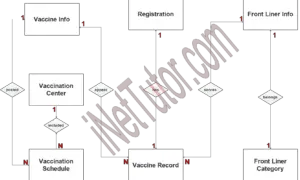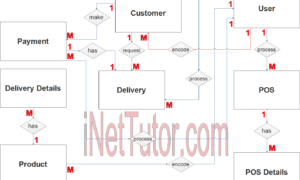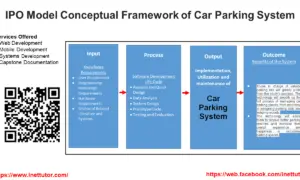Water Billing System Conceptual Framework
This article will show you how to create a conceptual framework for the capstone project titled Online Water Billing. The input, process, output (IPO) model was used to create the conceptual foundation for this investigation.
About the Project
Table of Contents
Technological advancement has made life simpler and easier to live. It allows people to accomplish the task easily and conveniently with just a few clicks on their gadgets. The capstone project, entitled “Online Water Billing System” is designed to automate the process of generating and delivering water bills to the consumers. The system will digitally transform the operation of the water districts.
The Online Water Billing system presented as a solution automates the processing and transmission of water bills. The water bills will be sent directly to the registered homeowner, eliminating the danger of them being delivered improperly. Water bill information will also be generated by the system, which will be particularly useful to water agencies. The system will also function as a consolidated database for billing information, allowing for easy report generation. The method would also assist clients to prevent late payments by sending them an SMS alerting them to the bill’s due date.
Objectives of the Study
- To create a system that will automate the handling of water billing.
- To provide a centralized platform for storing water bill records.
- To send water bill information to registered customers via electronic means.
- To create a system that allows water suppliers to manage a thousand-fold increase in water costs simply and efficiently.
- To assess user acceptability, functionality, efficiency, productivity, quality portability, and dependability of the system.
Importance of Conceptual Framework in Research
A conceptual framework is an important tool in research as it provides a structure for understanding the problem being studied and the relationships between the variables being investigated. The importance of a conceptual framework in research can be summarized as follows:
- Clarity: A conceptual framework can help to clearly define the problem being studied, the research questions and the objectives of the study. This can help to ensure that the research is focused and that the findings are relevant to the problem being studied.
- Direction: A conceptual framework can provide direction for the research by identifying the key variables and the relationships between them. This can guide the data collection process and ensure that the research is comprehensive.
- Validity: A conceptual framework can increase the validity of the research by providing a logical and consistent structure for understanding the problem and the relationships between the variables. This can help to ensure that the findings are valid and generalizable.
- Replicability: A conceptual framework can make the research more replicable by providing a clear and detailed explanation of the problem, the research questions, the methods and the results. This can help other researchers to replicate the study and to compare the findings with other studies.
- Flexibility: A conceptual framework can provide flexibility to the research by identifying the key variables and the relationships between them. This can allow the researcher to adapt the research plan and methods based on the results of the study.
- Theoretical grounding: A conceptual framework can provide a theoretical grounding for the research by situating it within the broader field of study and related disciplines. This can help to ensure that the research is relevant and adds to the existing body of knowledge.
- Future research: A conceptual framework can provide a basis for future research by highlighting areas that need further investigation and providing a starting point for new studies.
Conceptual Framework Diagram
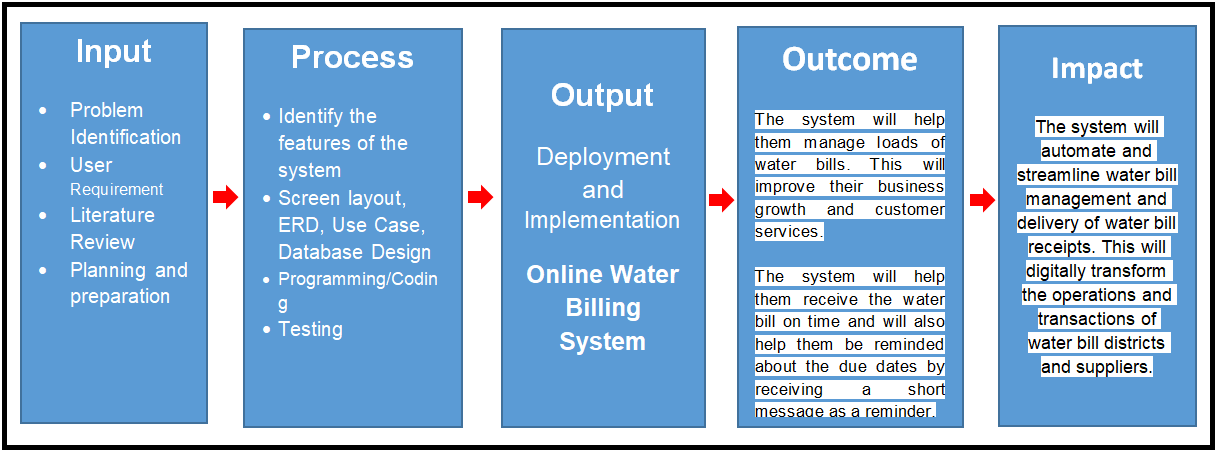
The study is guided based on the Logic Model Approach to design, develop, implement and basis for identifying and measuring the impact of the utilization of Online Water Billing System.
Input
Problem Identification – the respondents of this study will be different water billing stations. There are still water stations that face difficulties in managing water bills.
User Requirement – this is the part where the researchers have gathered information on the specific features of the system. It is very important to consider their ideas since they will be the one to use the Online Water Billing System.
Literature Review – the researchers have conducted research and studies that are closely related to the proposed system. This process will help the researchers in the development of the project or system.
Planning and Preparation – this is the part where the researchers will prepare the timeline and scheduled of activities for the entire project.
Process
Identify the features of the system – this stage of the process cycle is where the researchers enumerate the list of features to be included in the system based on the specified requirements needed by the end-users.
Screen layout – the researchers created a wireframe for every feature and form design as well. User Interface of the project is the output for this part.
ERD – entity relationship diagram represents the structural data model of the project.
Database Design – the ERD will be converted into the actual database that will be used in the project; in this case the ERD will be converted into a SQL database.
Use Case – the researchers also prepare a diagram on what are the features the users can access.
Programming/Coding – this is the project comes into life, the project will be developed in PHP, MySQL and Bootstrap.
Testing – the project needs to be tested before it will be implemented with live data and information.
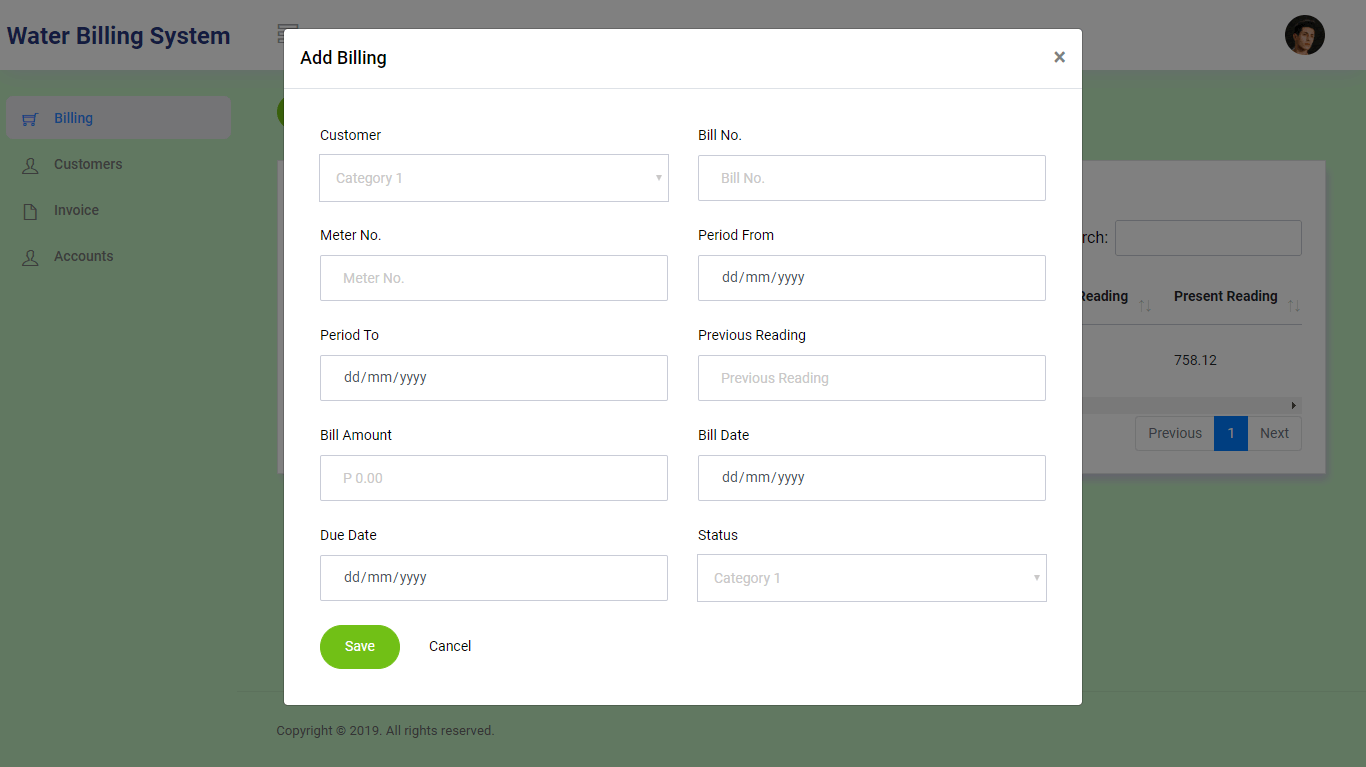
Output
Deployment and Implementation of Online Water Billing System – the design of the implementation is parallel, which means that the current manual method will still be in use while the system is also up and running. The purpose of the parallel method is to compare the results of the manual to the result of the database system. Eventually the manual process will be abandoned, and the full implementation of the system will take place.
Outcome
- The system will help them manage loads of water bills. This will improve their business growth and customer services.
- The system will help them receive the water bill on time and will also help them be reminded about the due dates by receiving a short message as a reminder.
Impact
The system will automate and streamline water bill management and delivery of water bill receipts. This will digitally transform the operations and transactions of water bill districts and suppliers.
Summary
“Online Water Billing System” is designed to automate the process of generating and delivering water bills to the consumers. The system will digitally transform the operation of the water districts. This article focused on the development of the study’s conceptual framework. The researchers used the output, process, input (IPO) model plus they also defined the outcome and the impact of the project. The input phase is consisting of Problem Identification, User Requirement, Literature Review and Planning and preparation. The process phase involves steps such as identifying the features of the system, Screen layout, ERD, Use Case, Database Design, Programming/Coding and Testing of the program. After the development the project will be then deployed and implemented. As stated in the conceptual framework the study will have 2 possible outcomes such as the system will help them manage loads of water bills. This will improve their business growth and customer services and the system will help them receive the water bill on time and will also help them be reminded about the due dates by receiving a short message as a reminder. The system will automate and streamline water bill management and delivery of water bill receipts. This will digitally transform the operations and transactions of water bill districts and suppliers.
Readers are also interested in:
Water Refilling System Use Case Diagram
Online Water Billing System Free Source code in Bootstrap
Water Billing System with Due Date SMS Notification
You may visit our Facebook page for more information, inquiries, and comments. Please subscribe also to our YouTube Channel to receive free capstone projects resources and computer programming tutorials.
Hire our team to do the project.
